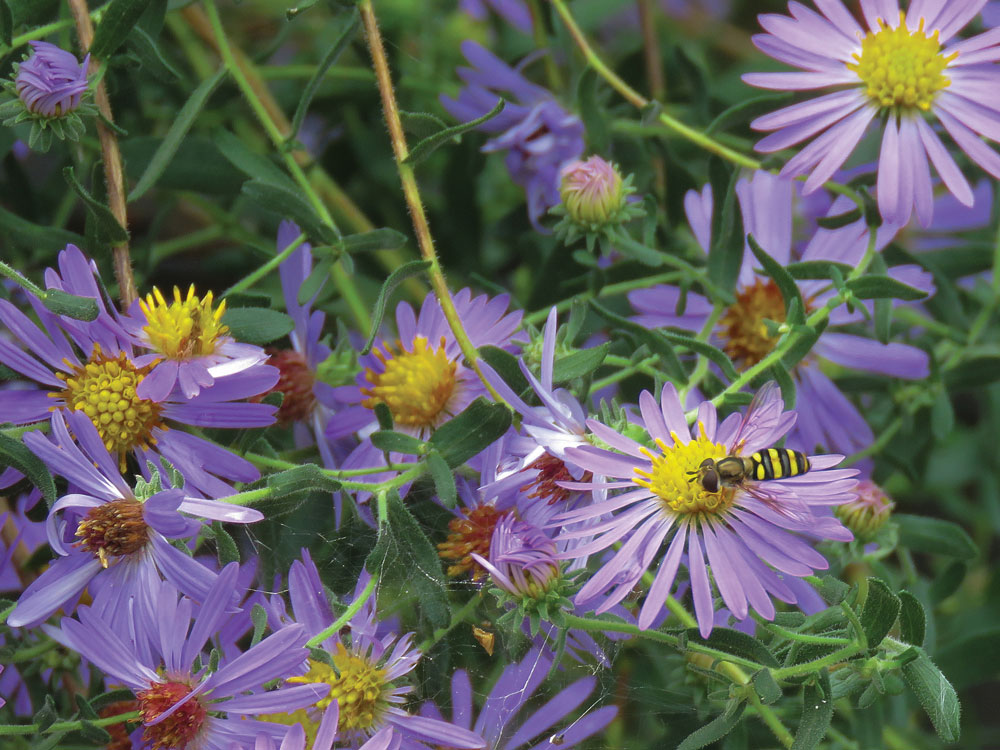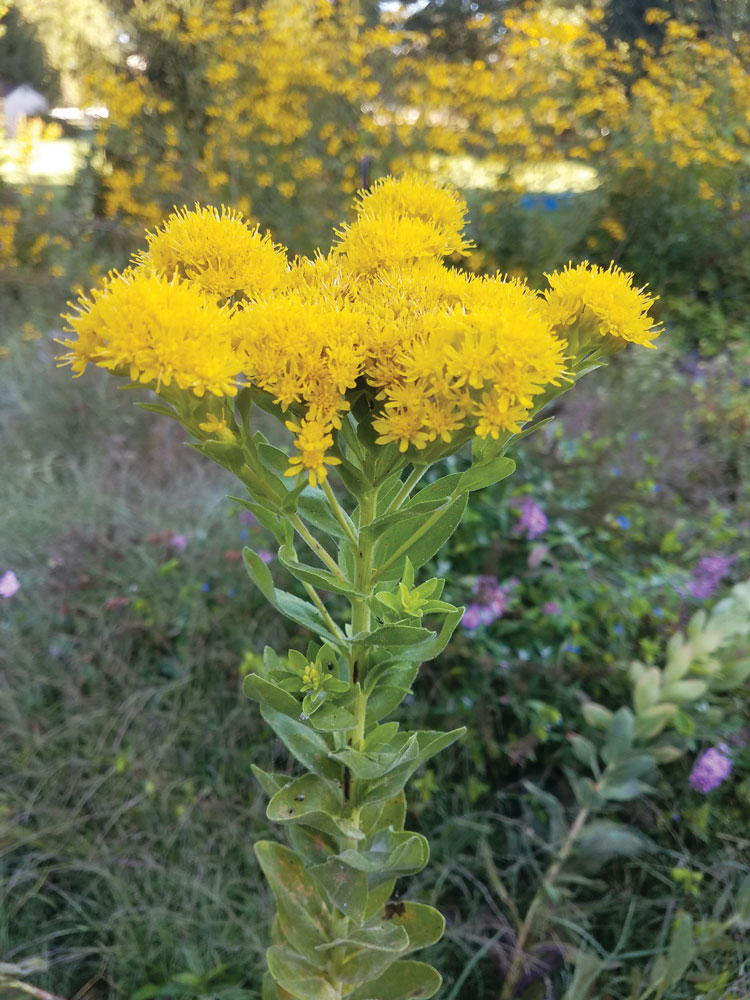Falling For Native Plants

By Celia Vuocolo, habitat & stewardship specialist for The Piedmont Environmental Council
Autumn is a time of activity – apple picking, back-to-school and trick or treating. Life is also bustling for our native plants and wildlife.
Birds and monarchs migrate, bees and butterflies throw off their last bit of energy and mammals bulk up for a long winter ahead. Our gardens are also putting on their last show of the year, and there are a number of native plants that can help your garden go out with a bang while providing a lifeline for our local wildlife.
Native plants are good for soil, wildlife and water conservation. As they have evolved with our local ecosystems, native plants take more readily to sites they are evolutionarily linked to, even where other traditional garden plants won’t grow. Providing native plants in the fall is crucial for migrating birds and late season pollinators.
A healthy backyard habitat garden will include plants that bloom from early spring through fall and have native fruiting shrubs and trees. Here are a few examples of some fabulous fall plants to consider for your garden:

Symphyotrichum oblongifolium, Aromatic Aster
Aromatic aster is arguably one of the most striking native fall perennials. Its vibrant purple flowers attract a variety of bees, butterflies and other insects. During mild autumns, it can bloom up until Thanksgiving!
It is a great plant to have for late migrating monarch butterflies, and it pairs well with little bluestem and goldenrod. Full sun and average-dry soils are best for the aromatic aster. It grows to 2-3 feet high and wide and behaves like a small shrub. Skip the mums this year and plant an aster instead!
Viburnum dentatum, Arrow-wood Viburnum
While not a fall-blooming plant, arrow-wood provides another important service: high-fat fruits for migrating songbirds! If you’re looking to plant a shrub to attract birds, this is one of the best. Dark purple berries appear in early fall, it grows to 6’-10’ high and wide, has a lovely fall color and produces white clustered blooms in the springtime.
Viburnums provide a food source for 97 species of native Lepidoptera caterpillars, which mature into some of our much-loved butterflies. Arrow-wood in particular hosts the spring azure butterfly. Full or partial sun and average soils work for this plant, and it tolerates clay soil and black walnut trees!
Solidago rigida, Stiff goldenrod
Goldenrods sure do get a bad rap! Despite popular belief, they are not what causes hay fever in the fall (that would be their lesser-known neighbor, ragweed, which blooms at the same time). As a rule of thumb, colorful flowers have heavy pollen that relies on animals to move around, while nondescript green blooms are carried by the wind – and end up in your nose!
There are tons of goldenrod species native to Virginia, and they all vary in flower presentation, structure and preferred growing conditions. Stiff goldenrod is a great one for gardens because it has an elegant habit and, unlike some of the other goldenrods, it is well behaved.
Solidago hosts 112 species of native butterfly, moth and skipper caterpillars, while also attracting a wide diversity of insects to its blooms. It likes average soil and full sun, and it grows to 3-5 feet high. ML


